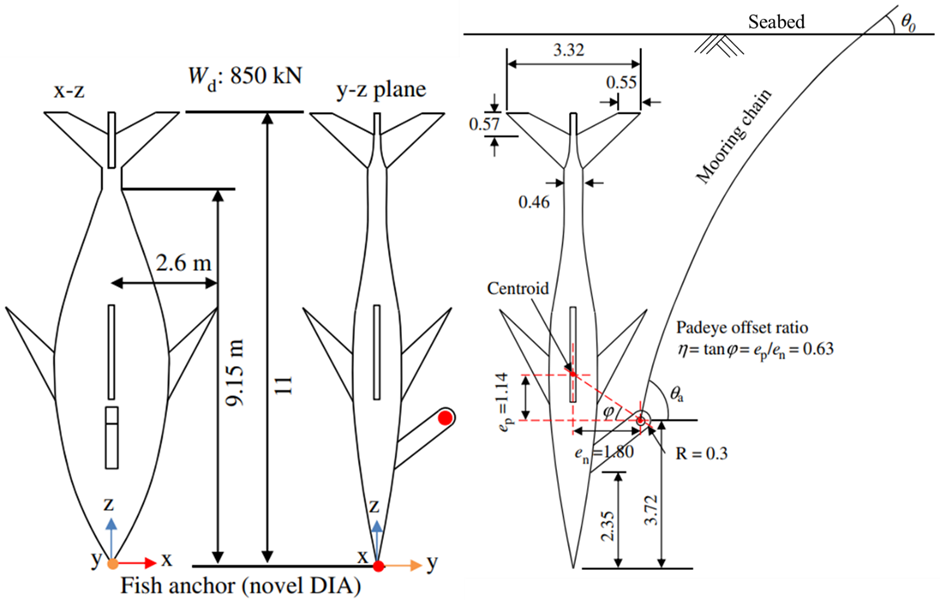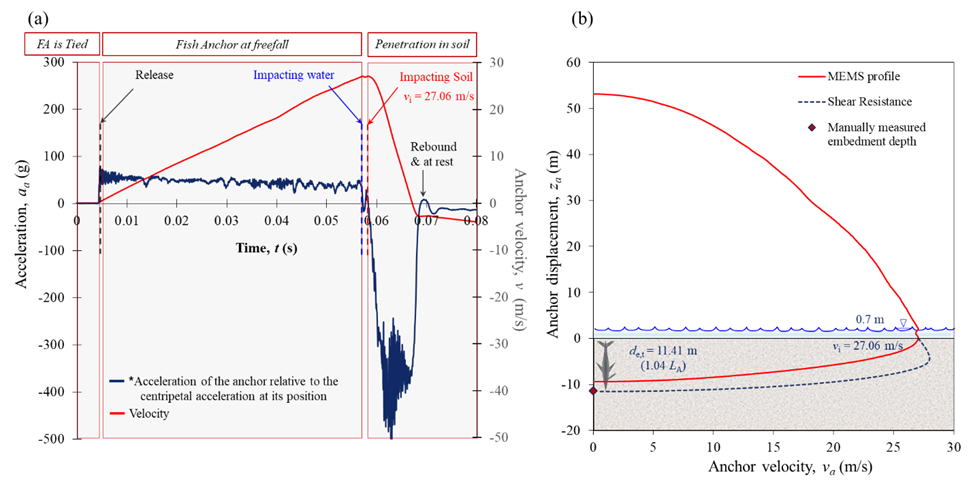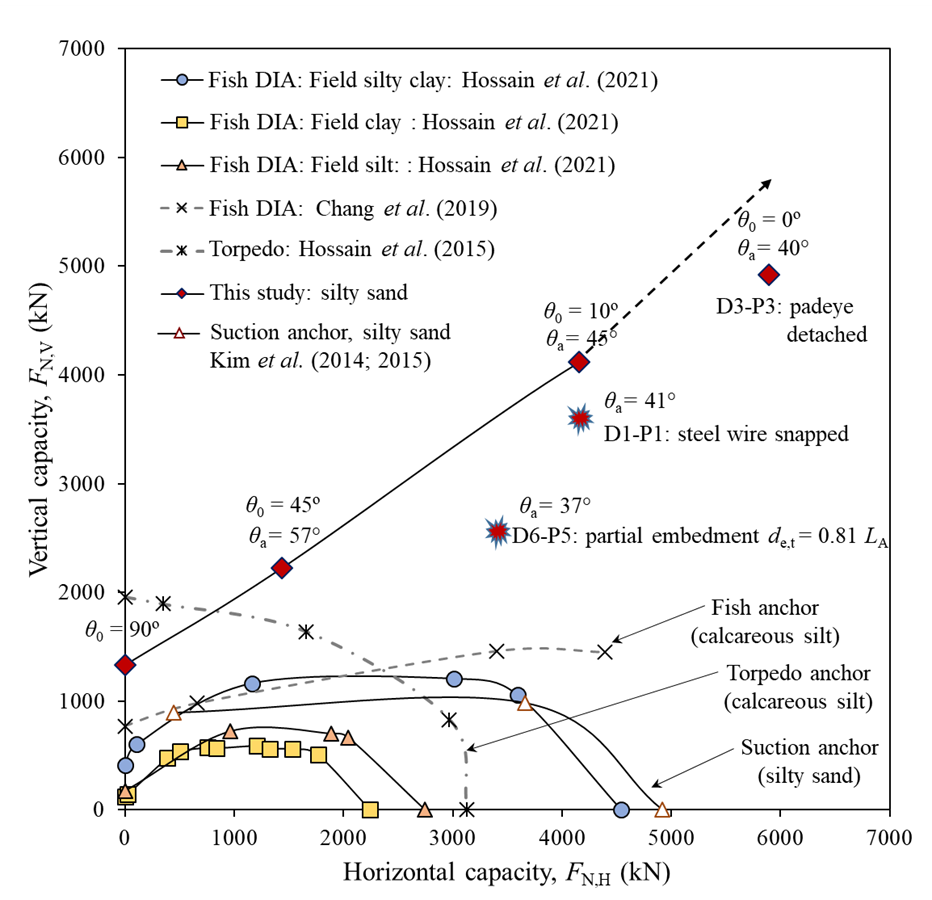- 글번호
- 144
Dynamically Installed Fish Anchor
- 작성자
- 추연욱
- 조회수
- 268
- 등록일
- 2022.08.03
- 수정일
- 2022.08.03
▶Background of the study
Dynamically installed anchors (DIA) are the most recent generation of anchoring solutions for supporting offshore floating facilities. The anchors are installed through free-fall dropping through the water column followed by striking the seabed at an impact velocity, leading to penetrating the seabed. The anchor has received significant attraction because of this simple installation technique (necessitating no external energy source like hammering for piles and pumping out water for caissons) and cost-effectiveness. DIAs, such as torpedo and OMNI-Max, are being increasingly used to moor mobile offshore drilling units and floating production storage and offloading units in deep and deeper water depth oil and gas developments because of efficiency and effectiveness for supporting relatively small floating facilities. Recently the dynamically installed fish anchor, taking a geometry from nature, has been developed for using particularly in dilative soils.

Schematic diagram and prototype dimensions of fish DIA
▶Objectives
This study assesses the performance of the fish anchor in silty sand deposits with the aim being potentially using the anchor in supporting floating wind turbines in shallow water sandy seabed.
▶Research development & Key findings
A series of centrifuge tests were undertaken wherein model fish anchors were dropped from a height of 36.75–57.72 m above ground level. The achieved impact velocities were 17.15–27.42 m/s. The anchor with a dry weight of 1175–1338 kN embedded into the soil deposit to a depth of 0.81–1.18 times the length. The performance of the fish anchor in terms of tip embedment depth during dynamic installation and diving potential and capacity under operation loading have been assessed. Normalized tip embedment depths were plotted in a total energy framework, and explained by a shear resistance method.
The embedded anchor was loaded monotonically up to the failure. The peak capacity at failure was found to reduce with increasing the loading (mooring) angle at the mudline to the horizontal. For vertical or 90? loading, the capacity was around 2 times the weight of the anchor submerged in water. The capacity increased to 7.13 times the weight as the loading angle reduced to 0? (horizontal). The strong resistance of sandy soil and higher load inclination at the padeye prevented the diving potential of the anchor. The holding capacities of the fish anchor were higher than those of the other anchors with relatively similar or larger sizes (in terms of anchor length and weight). This means the fish anchor can be a more cost-effective and efficient anchoring solution.


- 첨부파일
- 첨부파일이(가) 없습니다.